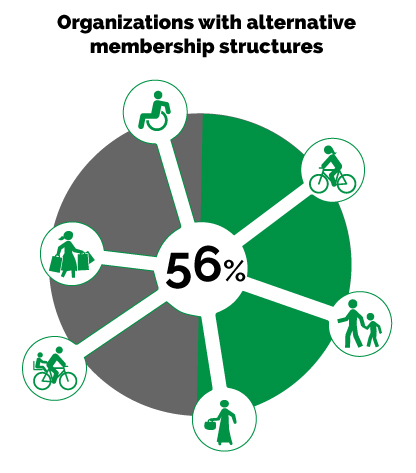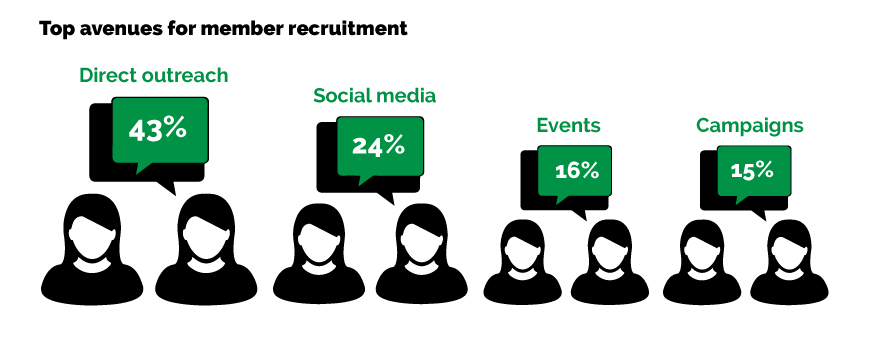We all recognize the constituency for our advocacy work goes far beyond those with the means (or motivation) to pay. And we know that engagement can’t be measured solely by the names on our collective member rolls. But, as our State of the Movement report confirmed, membership — paid or otherwise — still plays a key role on the impact, advocacy and financial sustainability of Alliance member organizations.
How is the bike/walk movement innovating in the realm of membership models? And how many organizations feel their membership is representative of the surrounding community? Read on...
Membership models

Of the organizations who have a fee-based membership program, 49% offer a distinct household membership, separate from an individual membership. Our survey also found that 36% of organizations do not rely on membership dues at all, using membership models that prioritizes involvement in lieu of monetary contributions.
In addition, the majority of organizations (56%) have some alternative membership structure — for instance, offering different levels to accommodate students and seniors. Some of these approaches include:
- Intentionally having no members
- Equating volunteer time as member dues, and including anyone who has volunteered as a member even if they do not make an explicitly financial contribution
- Allowing members to pay what they can, with premium benefits offered at certain price points
- Offering sliding scale membership fees depending on income
- Providing different levels of membership for different perks, including corporate, business and lifetime memberships
- Offering reduced membership fees at events
Member recruitment
When it comes to gaining new members, 43% of organizations reported that direct outreach was their primary method of recruitment. Nearly a quarter (24%) of survey respondents noted social media as their most important means of recruitment with 16% identifying event attendance and 15% identifying campaign activities as their most important means.

Because it was difficult to capture in multiple-choice format, 76% of respondents offered write-in options as their first or second most influential recruitment technique, specifying their event or engagement that draws the most support. Some of those write-ins included:
- Bike shop activities
- Media coverage
- Improved technological tools to facilitate outreach via social media
- Public recognition and awards
- Pop-up demonstrations
- Bike rentals, ferries, valets
Member demographics
Very few organizations (1 in 5) have surveyed their members for demographic information, and only 25% feel that their membership is representative of the surrounding community. Of those organizations that measured, on average 60% of members are male. Data shared by organizations also reported members who were more educated, White and urban than the geographies they serve. The average age reported was along a wide spectrum, from 33 to 58.

Just as the Alliance hopes to more effectively engage with members as a result of this report, the organizations who have surveyed their members are leveraging that knowledge to inform organizational priorities moving forward.

